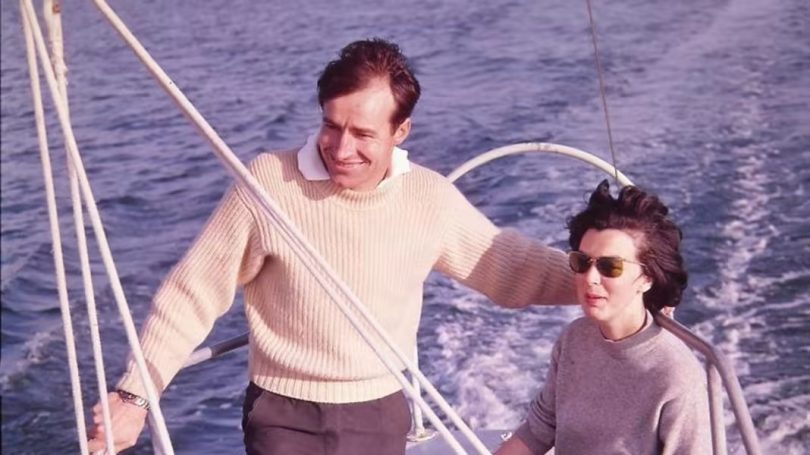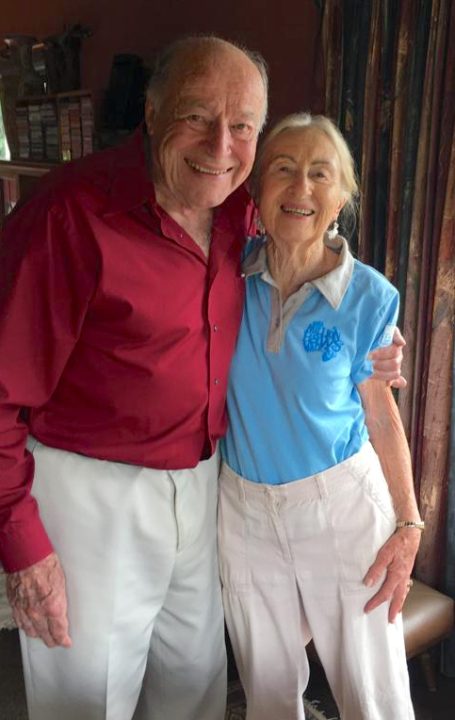
DEREK KELSALL
The top British Multihull Designer of the 1960's 70's and 80's.
In the 1970's Derek who had stunned the yachting establishment with the UK's first modern trimaran in 1966 was one of the most successful yacht designers in the World designing the largest trimaran in the World and boats he designed and others he built to other's plans were winning races and setting speed records. He pioneered grp foam sandwich boat building, now one of the most common types of construction with added carbon and epoxy elements.
Trilogy III was designed by Derek Kelsall in 1977 intended to be one of a range of cruising trimarans including the Tango 32 and Tango 23.
Arthur Piver had sailed his trimaran Nimble across the Atlantic in 1960 and in 1962 sailed to New Zealand from San Francisco. Piver had a massive impact and in the 60's and 70's hundreds of his trimarans were built by amateurs and professionals. Engineer Derek Kelsall was working in Texas and became interested in these craft and built a Piver trimaran sailing it back to the UK.
In 1964 he built a 35 foot trimaran based on a set of Piver hulls in order to compete in the OSTAR single handed transatlantic yacht race. Although his new and highly modified Piver raced against two catamarans they both had ballast keels because their owners or designers lacked sufficient faith in the multihull concept. Derek was the first man to race an unballasted multihull across the Atlantic.
In 1966 Derek became involved in a boatyard in Cornwall and in partnership with the owner constructed a revolutionary trimaran named Toria. Built in plastic foam sandwiched in grp with ply beams holding the hulls together she had round bilge hulls and the outriggers were placed to be out of the water at rest. Nets replaced decks between the hulls. The shape of the hulls was influenced by the racing day sailor catamarans that were achieving terrific speeds. Derek Kelsall is sometimes described as the inventor of the modern trimaran because of Toria. His development of the modern concept of open hulls with round bilge shapes was ahead of the rest. In Australia Lock Crowther had designed day racer small trimarans on similar lines and he too was developing this to ocean racing and cruising trimarans at the same time. In the USA Dick Newick had bult some trimarans and was moving away from the fully decked concept as well but it was Derek who really made his mark first by not only designing such a vessel but immediately sailing it to a stunning race victory.
Derek took his new boat to Plymouth and raced in the 1966 Round Britain yacht race winning the race in record time. On the back of this he set up a boatbuilding business and designed many fine trimarans and catamarans in a career that lasted until his death in 2022. He developed the Toria design further in 1967 with the resulting boat called Trifle proving a very successful and fast cruiser/racer. In 1969 he was commissioned to design Trumpeter for an American Newspaper man Phil Weld who took her in the 1970 Round Britain Race and the 1972 OSTAR crossing the Atlantic three times. After legendary French sailor Eric Tabarly the winner of the 1964 OSTAR where he competed against Derek sailed with Derek on Toria he was also determined to get a multihull. Unfortunately he did not go to Derek for a design probably because he had French Navy and government sponsorship so a French designer was required. Andre Alegre designed the revolutionary aluminium 63 foot trimaran Pen Duick IV for the 1968 OSTAR. In a sense Derek's taking Eric on Toria started the modern French multihull craze (albeit the history of Kaimiloa, Ananda and Copula shows the French were into multihulls earlier).
In 1973 Derek designed and built FT a startling pink trimaran sponsored by the Financial Times newspaper which completed many races including the 1974 Round Britain race and the 1976 OSTAR.
As a boat yard owner and builder Derek built mono hulls "Sir Thomas Lipton" to win the 1968 OSTAR and Great Britain II for Chay Blyth who won the Around the World Race and the brilliance of the way Derek built her made her on of the World's most travelled yachts with many more circumnavigations to her credit and today she is still afloat in the UK.
In 1975 Blyth came back to Derek for the design and build the World's largest trimaran the 80 foot long Great Britain III for a proposed Race Around the World for multihulls but in qualifying for the 1976 OSTAR he collided with a ship and the bow of the port outrigger was cut off. Blyth tried to sail on into Dartmouth but the port hull full of water caused the tri to capsize.
Derek then built him a smaller tri called GBIV and Blyth won the 1978 Round Britain yacht race in her. He finished just ahead of Three Legs of Mann II a fabulous 53 footer designed for Nick Keig who had a lot of success with a 37 foot Kelsall stock design called Three Legs of Mann. Keig built a third 53 foot tri designed by Kelsall and came second in the 1980 OSTAR.
By now Derek Kelsall was a World class multihull designer and builder with his stock designs sailing all over the World. As well as his successes with FT, Chay Blyth, and Nick Keig he designed three trimarans for French racer Eugene Riguel, called VSD, VSD2 and the 93 foot William Saurin in 1983. The original VSD was a sister ship to GBIV and crossed the Atlantic but was lost by grounding on a reef. Her successor was more on the lines of Three Legs of Man III and even had hydrofoils. She survived a pitch pole capsize and made many successful Atlantic crossings winning the 1979 French Transat Race and was in the 1980 OSTAR. She was still sailing in as a restored classic yacht in 2018 but was lost in an accident at Sete where she was blown on to rocks in a storm.
After the William Saurin (again the World's largest tri at in 1983) Derek's star was waning in the international racing design market in the late 80's and 90's because with other rising stars in the UK such as John Shuttleworth (who had worked with Derek but went out on his own with trimarans for Chay Blyth and Peter Phillips) and many others plus a new movement of racing designers in France were being commissioned with big sponsors. Racing trimarans grew bigger and more extreme. Cruiser - racers like The Three legs of Man tris were supplanted by purely racing machines leading up to the Ultim class we have today. But Derek concentrated on developing advanced and easier construction methods and designing a variety of sailing and motor catamarans for amateur and professional production. He concluded that the catamaran concept and placement of buoyancy in the corners was the preferable platform notwithstanding the strength of the trimaran concept especially under 40 feet. His work covered an incredible range from day racing catamarans to superyachts. The Suncat range (30 foot to 40 foot designs) in the 1990's were semi production and many circumnavigated. He had been an early adaptor of computer design for GBIII. In the 1990's he embraced CAD and his designs continued to be built all around the World with new ideas and development of different rigs showing in some of his last designs in the first decade of the 21st Century. Derek had moved to New Zealand in 1998 after his wife Clare passed away and found happiness in a new partnership with Paula. He wrote and excellent book on catamarans in 2001. He remained active in design work during the last two decades of his life with design and build of the very successful large catamarans "My Way" (2003) and "Cool Change" (2015) and a 60 foot development of this design launched in Peru in 2017. He continued to experiment with folding and amphibious catamaran designs. On 11 December 2022, at the age of 89 he passed away.
His influence can be found in the history of multihulls over the past 55 years and many of his designs remain sailing all over the World.
Derek Kelsall 1938 to 2022
©Copyright. Trilogy Sailing Ltd and Lawrite Limited and Martin Phillips . All rights reserved.
We need your consent to load the translations
We use a third-party service to translate the website content that may collect data about your activity. Please review the details in the privacy policy and accept the service to view the translations.


